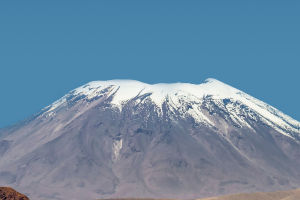The camel is a genus of camels under the family Camelidae, the even-toed ungulates.
The camel can live in a harsh desert environment because of its peculiar body structure.
In summer, when the sun is blazing, the desert surface temperature can reach 70°C. Camels are not afraid of heat.
This is because the camel's paws have a wide pad of flesh. This pad not only protects the camel from burns but also ensures that it can walk properly in the sand.
The camel also has long eyelashes and a flap on its nostrils, which protect it from the wind and sand. The camel also has long, thin hairs in its ears, which are used to keep out the sand and wind.
The camel's body has one or two humps, which contain fat that is automatically converted into nutrients to keep it alive and prevent it from starving to death when food is lacking for a long time.
In addition to food, there is one more thing that is essential for survival - water. Camels are thirsty. This characteristic is closely related to the distribution and decomposition of fat in the body.
Most of the fat in the camel's body is distributed on the hump and back. There is about 40 kg of fat in the hump. When the sun shines directly on the camel's back in the hot summer, the back acts as a heat insulator.
The fat in the camel also produces water during the oxidation process, which gives water needed to sustain life In addition to producing water in their bodies, camels can also store water in their bodies.
When camels encounter a water source, they drink large amounts of water, which is rapidly dispersed throughout the body and diffused through the circulatory system to spare cells throughout the body.
Due to the many extremely thin and tortuous tubes inside their noses, the tubes are normally moistened with fluid. When there is a lack of water in the body, the ducts immediately stop secreting fluid.
And a layer of crust is formed on the surface of the ducts, with which the exhaled water is absorbed and not lost outside the body. When inhaling, the water inside the crust can be returned to the body.
The water is recycled repeatedly in the body, so it can withstand thirst.
Another amazing feature of the camel's body is that its body temperature can change with the outside temperature, thus reducing the evaporation of water.
The camel's body temperature does not start to sweat until it reaches 40°C. When the temperature rises during the day, the camel's body temperature does not rise immediately, thus avoiding the evaporation of large amounts of water due to sweating.
At night, the temperature in the desert drops sharply and the camel's body temperature drops to 34°C. Thus, the camel's body temperature drops to 34°C. In this way, the camel's body temperature changes with the temperature to widen the diurnal temperature gap, reducing sweating time and water loss.
The average camel's speed is 14.5 to 16 km/h. The Arabian camel is adapted to deep sandy soil and hot weather. It can carry 400 pounds (180 kg) of cargo up to 40 miles (64 km) per day for four days.
Camels used for racing can reach speeds of up to 8 miles (13 km) per hour. Sprint speeds can reach 40 mph and long-distance sustained speeds can reach 25 mph.


